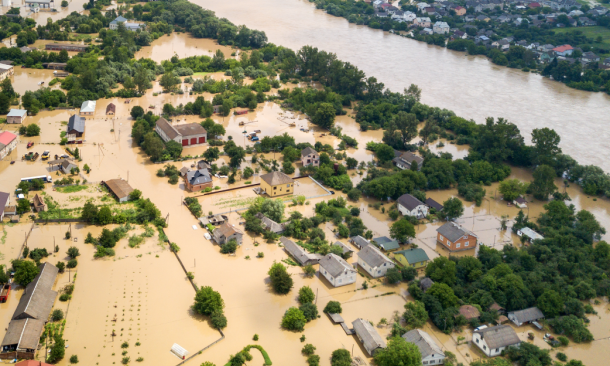Insurance Adjusters
Are you interested in becoming an NFIP adjuster? Check out application instructions, qualifications, frequently asked questions and resources to assist you!

How to become a National Flood Insurance Program (NFIP) Adjuster
-
On this page you'll find in-depth information on how to become an NFIP adjuster, including application instructions, qualifications and frequently asked questions.
-
The page also helps users find the Virtual Flood Response Office (VFRO).
-
You'll also find adjuster-specific documents and manuals that can be helpful for those who are either in training or already certified.
Application instructions
All independent adjusters who want to participate must submit the Adjuster’s Registration Application.
The application includes four types of registration:
- Residential (Dwelling)
- Manufactured (Mobile)
- Home/Travel Trailer/Commercial (General Property)
- Condominium (RCBAP)
Write Your Own (WYO) company staff adjusters should follow their company's procedures.
Application download instructions: Right click and select, “save link as.” Then save the document to a folder or on your desktop. Right click the saved document and select your Adobe Reader to open.
Qualifications
An adjuster can register for one, all four or any combination of categories, As long as they meet the requirements shown below:
To be approved for residential or manufactured (mobile) homes losses, or both, an adjuster must:
- Have at least four consecutive years of full-time property loss adjusting experience.
- Be capable of preparing an accurate scope of damage and dollar estimate up to $50,000 for manufactured (mobile) homes and up to $250,000 for residential losses.
- Have attended an NFIP claims presentation and be able to demonstrate knowledge of the Standard Flood Insurance Policy (SFIP) and of NFIP adjustment criteria for all policy forms.
- Be familiar with manufactured (mobile) home and Increased Cost of Compliance (ICC) adjusting techniques.
To be approved for Commercial or Condo/RCBAP losses, or both, an adjuster must:
- Have at least five years of full-time large-loss property adjusting experience.
- Be capable of preparing an accurate scope of damage and dollar estimate of $500,000 or more for commercial losses.
- Be capable of preparing an accurate scope of damage and dollar estimate of $1,000,000 or more for RCBAP losses.
- Submit written recommendations from three insurance company supervisory or claim management personnel. The recommendations must verify adjusting experience only.
In 2025, the NFIP has combined large and small commercial into one classification. If you currently have only small or large commercial, or both, your Flood Control Number (FCN) will automatically be modified to commercial classification after completing the annual NFIP claims presentation. Submitting a new adjuster application form is not necessary.

Renewals
The NFIP will automatically renew active adjusters when they attend the annual NFIP claims presentation. FEMA reserves the right to request a new application from any adjuster when needed to update records.
Registration FAQs
Please email your completed NFIP Adjuster Participation Application to NFIPAdjusterMailbox@fema.dhs.gov.
Please email specific questions NFIPAdjusterMailbox@fema.dhs.gov.
Email specific questions to NFIPAdjusterMailbox@fema.dhs.gov.
The FACP was created to increase the number of claims adjusters who are trained and available to help NFIP policyholders after flood events.

2025 FACP Trainee FCN Card
Section 5.3 of the Manual outlines trainee eligibility and requirements. Trainees will receive their own trainee FCN number on their FCN card. It will also include the name of their FACP adjusting firm. The FACP adjusting firm will assist with completing the application to receive a trainee adjusting card.
Additional resources
-
Free online courses for NFIP adjusters
Check out these courses designed to help you expand your skills and stay up to date with industry standards.
-
NFIP Claims Adjuster webinars
Catch up on free NFIP Claims Adjuster webinars with expert tips and updates.
-
Flood Adjuster Capacity Program (FACP)
The FACP Manual has all of the information you need to know about the Program.
-
Special Allocated Loss Adjustment Expenses (SALAE)
This provides in-depth information about SALAE and types of SALAE.
-
Adjuster’s preliminary report
Adjusters use this form to report information to the insurer for setting reserves and initial claims reporting.
This form needs to be downloaded and opened in the Adobe Reader desktop app.
-
Adjuster’s narrative report
PDF of adjuster’s report.
This form needs to be downloaded and opened in the Adobe Reader desktop app.
-
Adjuster’s subrogation referral
Use this form to identify potentially responsible third parties and their actions that may have caused or worsened flood damage.
This form needs to be downloaded and opened in the Adobe Reader desktop app.
-
Proof of Loss Adjuster-Prepared
Policyholders use this form to provide Proof of Loss to their insurer. This is an adjuster prepared form.
This form needs to be downloaded and opened in the Adobe Reader desktop app.
-
Adjuster’s manufactured (mobile) home travel trailer
This PDF for adjusters includes information about mobile homes.
This form needs to be downloaded and opened in the Adobe Reader desktop app.
